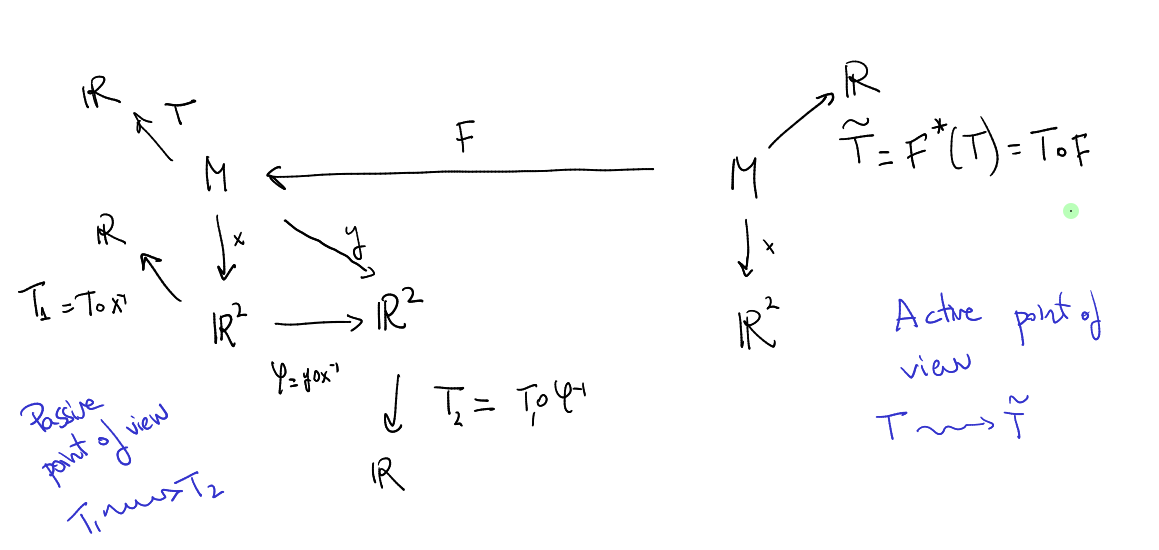Classical field
Definition
See Classical Field Theory .
See gauge theory#Coming from Classical field theories.
A classical field theory is the following data:
- A
-dimensional manifold (space-time) , - A target space
, to construct the space of fields . - A Lagrangian, which is a polynomial
, for , where .
Then, they are generalized to gauge theories, which are the same stuff but instead ofwe use sections of a fiber bundle as matter fields.
Types of fields
- Scalar fields. Section of a rank 1 vector bundle over spacetime. Related to spin 0 particles.
- Vector fields. Section of a rank
vector bundle over a -dimensional spacetime. Related to spin 1 particles. - Spinor fields (classical spinor field?). When they say a particle has spin 1/2 what they mean is that the particle is the quantum version of a classical spinor field, that is, for every point
in the (3+1)-spacetime we have a vector in such a way that if we consider a change of local frame in through an element , then acts on by means of a spin representation of .
Transformations of fields
Given a field, in the sense of an element

In the picture it looks like if the transformation
Physically, this would be possible if we are transforming the space but not the source of the field. That is, we are changing the relative positions of elements of the universe, not the entire universe.
Usually,
Examples: Consider
Usually, physicist distinguish between active and passive transformations. Let's delve into this. Observe the diagram:

We consider a space
On the other hand, in the right hand side we can see a map
At the manifold level, once we fix a coordinate system for the space, changes of coordinates and proper transformations of
In this sense, a passive transformation can be understood as an active transformation, whenever a coordinate system is distinguished.
Importantly, this is not true when we are dealing with spaces endowed with a structure, for example a Riemannian metric
It is no longer true that this passive transformation induces an active transformation since as you can see
we are changing the metric, so